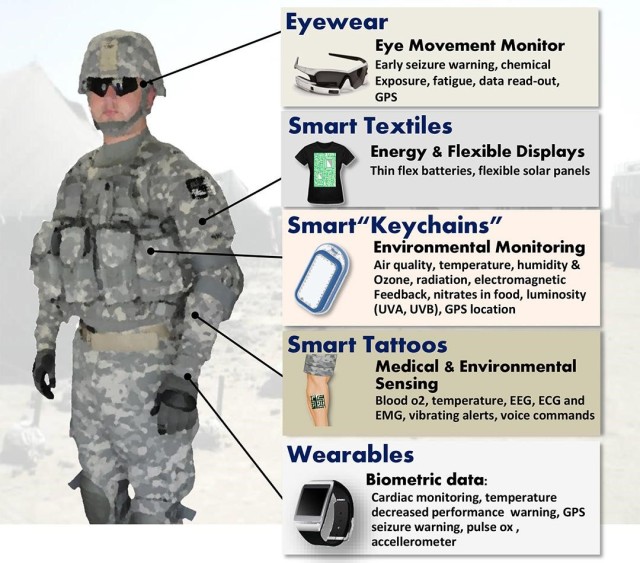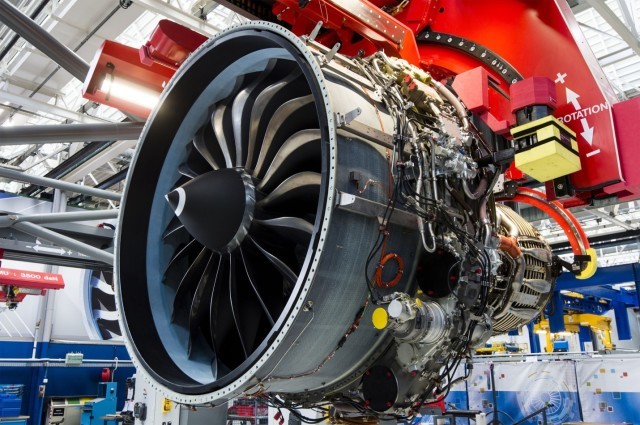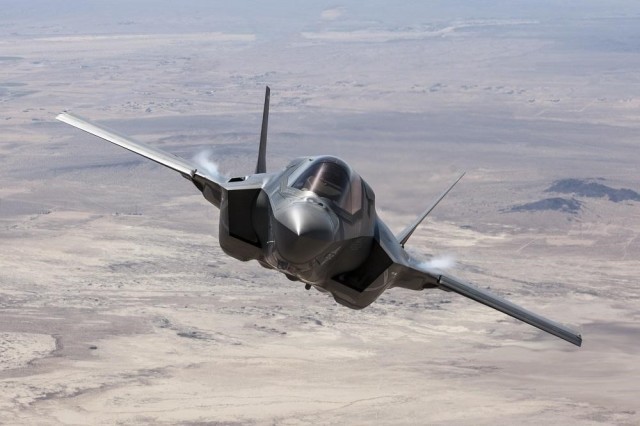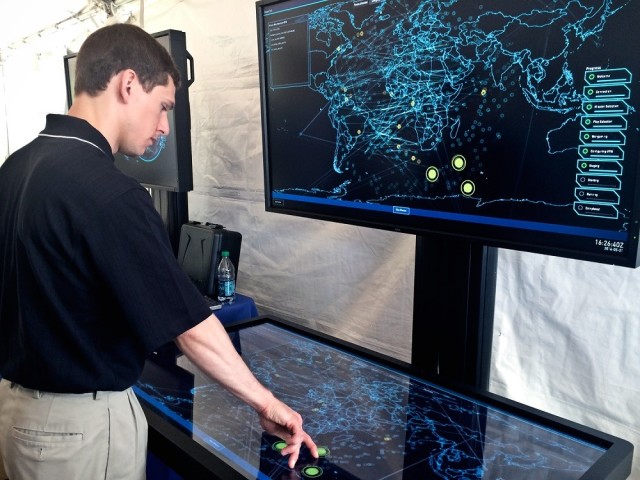Shane Laros
http://www.engineering.com/AdvancedManufacturing/ArticleID/13712/5-Technologies-Transforming-the-Defense-and-Aerospace-Industries.aspx
The aerospace and defense industries are at the forefront of innovation, driven by technological advancements just as much as they drive them. A recent report by Frost & Sullivan examines the technologies that are transforming defense and aerospace.
1. Wearables

(Image courtesy of Edgewood Chemical Biological Center / U.S. Army.)
Getting reliable and up-to-date information on the battlefield is crucial, and being able to monitor a soldier’s condition can prevent avoidable injuries. Both needs can be satisfied via wearables, such as heads-up-displays (HUDs) and smart tattoos that monitor vital signs. Wearables are also useful in the factory, where head-mounted displays and smart glasses can be used in maintenance and assembly applications.
2. Additive Manufacturing

The LEAP-1A engine features next generation technology for greater fuel efficiency and decreased CO2 emissions. (Image courtesy of CFM International.)
3D printing is becoming ever more ubiquitous in the aerospace industry, where new designs enables lighter and stronger aircraft. Airbus has already begun printing parts using recently approved materials, and the industry will likely see more significant changes as new materials and more efficient methods become available.
3. Specialized Imaging

THz Imaging may seem invasive, but it could be a matter of life and death. (Image courtesy of Science.)
From autonomous aircraft to Terahertz (THz) imaging, many industries can benefit from advanced visual imaging technology. Whether it’s military or security personnel identifying concealed weapons, or advanced flight systems to assist human or autonomous pilots, the technology is finding its way into a range of applications.
4. Better Batteries

The F-35 JSF uses a Li-ion battery as a backup. (Image courtesy of U.S. Army.)
Battery technology is always improving, with lithium-ion batteries now a mainstay in electronics after their commercial release in 1991. In addition to powering electric vehicles, these high capacity, mostly reliable batteries are being utilized in defense and aerospace applications as systems backups for a variety of aircraft, including the F-35 fighter and both Boeing and Airbus jets.
5. Cloud Computing

(Image courtesy of DARPA.)
While potential applications in the defense industry range from integrating logistics into wearable tech to analyzing big data from Army installations around the world, it's in aerospace that cloud computing is making the biggest waves.
Aside from the ability to connect every aircraft currently flying, expanding existing satellite systems and GPS or having up to date and relevant flight information, cloud computing can also benefit the intensive simulation work necessary for aerospace design and testing.
The rise of cloud computing and connected technology is also driving developments in cybersecurity, which cuts across both aerospace and defense.






No comments:
Post a Comment